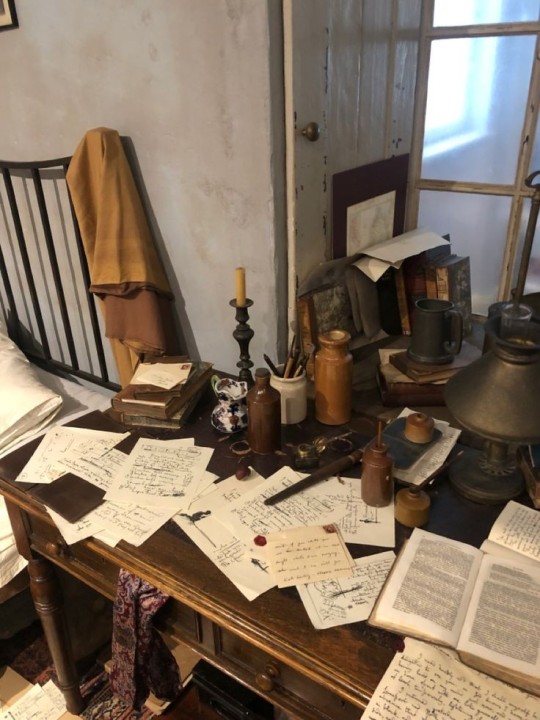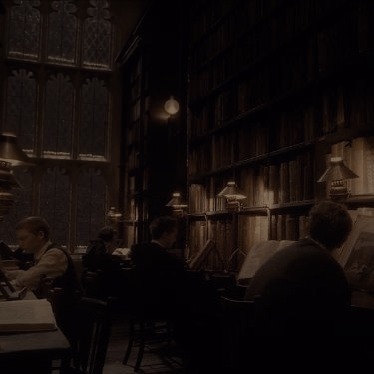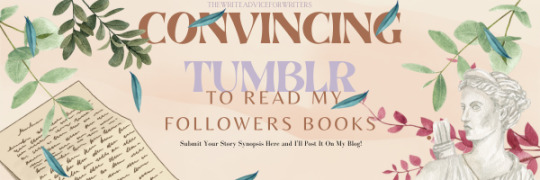Text









Charles Macaulay
'Not sure if I need a glass of wine or a gun or both.'
—Charles Macaulay, The Secret History by Donna Tartt (1992).
862 notes
·
View notes
Text









"Because it is dangerous to ignore the existence of the irrational. The more cultivated a person is, the more intelligent, the more repressed, then the more he needs some method of channeling the primitive impulses he's worked so hard to subdue."
-Donna Tartt, The Secret History
499 notes
·
View notes
Text
Crafting The Perfect Lovers-to-Enemies Betrayal: A Guide for Aspiring Authors
Fellow writers and aspiring authors, you may be in need of crafting a compelling lovers-to-enemies betrayal for your fiction novel. Few plot twists are as captivating and emotionally charged as the transformation of once-intimate allies into bitter adversaries. In this guide, I'll help you explore the art of creating a lovers-to-enemies betrayal that will leave your readers gasping in disbelief and eagerly turning the pages for more.
Laying the Foundation:
To build a convincing and impactful lovers-to-enemies betrayal, you need to establish a strong foundation for your characters' relationship. Begin by developing a deep emotional connection between them. Portray their love as genuine, passionate, and unbreakable. Let readers witness their shared moments, inside jokes, and unwavering support for each other. This foundation will make the eventual betrayal all the more shocking and heart-wrenching.
Foreshadowing:
Witty and subtle foreshadowing is the key to creating an unforgettable betrayal. Pepper your narrative with hints and clues that something is amiss. Use foreshadowing techniques such as cryptic dialogue, ambiguous actions, or symbolic objects to plant seeds of doubt in your readers' minds. Engage their curiosity without revealing your cards too early, allowing the betrayal to unfold gradually.
Character Development:
To make the lovers-to-enemies betrayal resonate with readers, it's crucial to flesh out your characters' motivations and inner conflicts. Dive into their backstories, fears, and desires, unveiling the hidden layers of their personalities. Develop plausible reasons for the betrayal, rooted in their individual growth arcs. This will add depth, complexity, and authenticity to their transformation from lovers to enemies.
The Breaking Point:
Every betrayal has a breaking point—a moment of no return. This turning point should be meticulously crafted to maximize its impact. It could be a shocking revelation, an unforeseen twist, or an irreparable loss that shatters the trust between the characters. Build up the tension gradually, heightening the emotional stakes until the breaking point becomes inevitable.
Emotional Fallout:
Once the betrayal occurs, the emotional fallout should be palpable and heart-wrenching. Explore the raw emotions of anger, grief, and disbelief. Allow your characters to confront their newfound enmity head-on, engaging in intense confrontations and verbal sparring matches. Show the depth of their emotional wounds and the lasting scars left by the betrayal.
Consequences and Repercussions:
Betrayal carries consequences, and your story should reflect these repercussions. Illustrate how the betrayal affects not only the characters involved but also their relationships with other key players in the narrative. Show the ripple effects of the betrayal within the larger story arc, allowing it to reverberate throughout the novel and impact other subplots.
Transformation and Growth:
A lovers-to-enemies betrayal can be a catalyst for profound transformation and growth. Allow your characters to evolve in response to the betrayal, exploring the themes of forgiveness, redemption, and self-discovery. This will add richness and complexity to their arcs, making them more relatable and compelling to your readers.
Resolving the Conflict:
The resolution of the lovers-to-enemies betrayal should be as satisfying as the betrayal itself. Whether it leads to reconciliation, revenge, or tragic consequences, ensure that the resolution remains true to the characters' development and the overall tone of your novel. Tie up loose ends, provide closure, and leave your readers with a lasting impression.
Checklist For Writers
Establish a strong foundation:
Have you developed a deep emotional connection between the characters?
Have you portrayed their love as genuine, passionate, and unbreakable?
Foreshadowing:
Have you included witty and subtle hints and clues throughout the narrative?
Have you used foreshadowing techniques such as cryptic dialogue, ambiguous actions, or symbolic objects?
Have you engaged readers' curiosity without revealing the betrayal too early?
Character Development:
Have you delved into the characters' backstories, fears, and desires?
Have you established their individual growth arcs?
Have you created plausible motivations for the betrayal rooted in their personal journeys?
The Breaking Point:
Have you built up tension gradually leading to the breaking point?
Have you crafted a moment that is shocking, unforeseen, or irreparable?
Does the breaking point shatter the trust between the characters?
Emotional Fallout:
Have you depicted the raw emotions of anger, grief, and disbelief?
Have you allowed characters to confront their enmity through intense confrontations and verbal conflicts?
Have you shown the depth of emotional wounds and the lasting impact of the betrayal?
Consequences and Repercussions:
Have you explored the consequences of the betrayal on the characters involved?
Have you shown how the betrayal affects their relationships with other key players in the story?
Have you illustrated the ripple effects of the betrayal within the larger story arc?
Transformation and Growth:
Have you allowed the characters to evolve in response to the betrayal?
Have you explored themes of forgiveness, redemption, and self-discovery?
Does the betrayal serve as a catalyst for profound transformation and growth?
Resolving the Conflict:
Does the resolution of the betrayal remain true to the characters' development?
Does it provide closure and tie up loose ends?
Does the resolution leave a lasting impression on readers?
Examples & ideas On How to Establish A Deep Emotional Connection Between Characters
Shared Vulnerability:
Have the characters confide in each other about their deepest fears, insecurities, or past traumas.
Example: Sarah opens up to Jake about her fear of abandonment due to a troubled childhood, and Jake reciprocates by revealing his own struggles with self-doubt.
Intimate Moments:
Show the characters sharing intimate moments that highlight their emotional connection.
Example: Emma and Alex cuddle together on a rainy day, sharing their dreams and aspirations while basking in the warmth of their love.
Inside Jokes and Shared Memories:
Include inside jokes and references that only the characters understand, creating a sense of exclusivity and camaraderie.
Example: Lisa and Mark burst into laughter at the mention of a funny incident from their first date, showcasing a shared history and deep connection.
Unwavering Support:
Demonstrate the characters supporting each other through thick and thin, offering unconditional love and understanding.
Example: When James faces a career setback, Lily stands by his side, encouraging him to pursue his dreams and assuring him of her unwavering support.
Emotional Intimacy:
Showcase moments of emotional intimacy, where the characters express their feelings and empathize with each other.
Example: During a heart-to-heart conversation, Michael and Emily discuss their hopes, dreams, and the challenges they've overcome, forging a profound emotional bond.
Sacrifice and Protection:
Illustrate instances where the characters prioritize each other's well-being and safety, even at their own expense.
Example: When faced with danger, Sarah shields David from harm without a second thought, displaying her deep love and commitment to him.
Shared Goals and Dreams:
Establish common goals and dreams that the characters work towards together, reinforcing their shared aspirations.
Example: Emma and Ryan are both passionate about environmental conservation and collaborate on a project to create a greener community, strengthening their emotional connection.
Few Extra Tips For creating Believable Lovers-To-Enemies betrayal
Build Complexity:
Make sure the characters have multifaceted personalities with their own strengths, flaws, and conflicting desires.
Avoid stereotypical portrayals and strive for nuanced, relatable characters who are capable of both love and betrayal.
Foreshadow Effectively:
Use subtle hints and foreshadowing throughout the story to create anticipation and suspense.
Drop clues that something might be amiss in the relationship, without giving away the specific betrayal itself.
Motivation and Justification:
Develop strong motivations for the betrayal that align with the characters' growth arcs and personal journeys.
Provide plausible justifications for their actions, rooted in their fears, desires, or external pressures.
Gradual Transformation:
Allow the transformation from lovers to enemies to occur gradually, rather than abruptly.
Show the progression of small betrayals, conflicts, or misunderstandings that slowly erode the trust between the characters.
Emotional Impact:
Highlight the emotional impact of the betrayal on both characters involved.
Explore their feelings of hurt, anger, betrayal, and confusion, making the reader empathize with their emotional turmoil.
Consequences and Repercussions:
Illustrate the wide-ranging consequences of the betrayal, not only on the characters' relationship but also on other aspects of their lives and the story's narrative.
Show how the betrayal affects other characters, relationships, and subplots, creating a ripple effect throughout the story.
Character Growth and Arcs:
Use the betrayal as a catalyst for character growth and transformation.
Allow the characters to learn from their actions, confront their flaws, and seek redemption or revenge, depending on their paths.
Authentic Dialogue and Reactions:
Ensure that the characters' dialogue and reactions to the betrayal feel authentic and true to their personalities.
Capture the range of emotions, conflicts, and tensions through well-crafted dialogue exchanges and internal monologues.
Avoid Clichés:
Strive to create a unique twist on the lovers-to-enemies betrayal trope, avoiding clichés or predictable plot developments.
Surprise your readers with unexpected turns and outcomes that challenge their assumptions.
Resolution and Closure:
Craft a satisfying resolution that provides closure for the characters and the readers.
Tie up loose ends and address the consequences of the betrayal, allowing for a sense of resolution and growth.
Crafting a lovers-to-enemies betrayal is a thrilling endeavor that requires careful planning, attention to detail, and a touch of literary finesse. Hopefully this guide helped you get the foundation of Lovers-To-Enemies Betrayal.
#creative writing#on writing#thewriteadviceforwriters#writing#writing tips#writers block#writers and poets#how to write#writeblr#enemies to lovers#writersblock#writers on tumblr#writerscommunity#writersociety#writerslife#female writers#writblr#writer stuff#ao3 writer#authoradvice#writer#novelist#author#writerscorner
92 notes
·
View notes
Text
Announcing "Convincing Tumblr To Read My Followers' Books" Event! Submit Your Story Synopsis here!

Exciting news! I'm so thrilled to announce the launch of my latest event: "Convincing Tumblr To Read My Followers' Books." This is your chance to shine as a writer and gain exposure for your works-in-progress (WIPs) or published books.
Here's how it works: You, my talented followers, are invited to submit your story synopses and descriptions using the prompts provided below and inside the google form. Whether you're an aspiring author with a captivating WIP or a seasoned writer with a published masterpiece, this event is for you!
Once submitted, your stories synopsis and details will be featured right here on my Tumblr blog page. This platform provides you with the opportunity to showcase your creativity and connect with readers and fellow writers from all corners of the internet. It's the perfect chance to gain followers, receive feedback, and expand your audience.
But that's not all! As readers, you'll have the chance to explore a treasure trove of literary gems. Dive into intriguing synopses, discover new voices, and immerse yourself in captivating narratives crafted by your fellow Tumblr users.
Here are some of the prompts for submission:
Title of your book
Brief synopsis or description
What inspired you to write this book?
Main themes explored in your book
Genre(s) of your book
This event isn't just about promoting your work—it's about celebrating the power of storytelling and fostering a supportive community of writers and readers.
Submit your stories using the prompts in the google form. Fill it out and join us in "Convincing Tumblr To Read My Followers' Books." Let's make magic happen, one story at a time!
Happy Writing - Rin T.

28 notes
·
View notes
Text
Announcing "Convincing Tumblr To Read My Followers' Books" Event! Submit Your Story Synopsis here!

Exciting news! I'm so thrilled to announce the launch of my latest event: "Convincing Tumblr To Read My Followers' Books." This is your chance to shine as a writer and gain exposure for your works-in-progress (WIPs) or published books.
Here's how it works: You, my talented followers, are invited to submit your story synopses and descriptions using the prompts provided below and inside the google form. Whether you're an aspiring author with a captivating WIP or a seasoned writer with a published masterpiece, this event is for you!
Once submitted, your stories synopsis and details will be featured right here on my Tumblr blog page. This platform provides you with the opportunity to showcase your creativity and connect with readers and fellow writers from all corners of the internet. It's the perfect chance to gain followers, receive feedback, and expand your audience.
But that's not all! As readers, you'll have the chance to explore a treasure trove of literary gems. Dive into intriguing synopses, discover new voices, and immerse yourself in captivating narratives crafted by your fellow Tumblr users.
Here are some of the prompts for submission:
Title of your book
Brief synopsis or description
What inspired you to write this book?
Main themes explored in your book
Genre(s) of your book
This event isn't just about promoting your work—it's about celebrating the power of storytelling and fostering a supportive community of writers and readers.
Submit your stories using the prompts in the google form. Fill it out and join us in "Convincing Tumblr To Read My Followers' Books." Let's make magic happen, one story at a time!
Happy Writing - Rin T.

28 notes
·
View notes
Text
Announcing "Convincing Tumblr To Read My Followers' Books" Event! Submit Your Story Synopsis here!

Exciting news! I'm so thrilled to announce the launch of my latest event: "Convincing Tumblr To Read My Followers' Books." This is your chance to shine as a writer and gain exposure for your works-in-progress (WIPs) or published books.
Here's how it works: You, my talented followers, are invited to submit your story synopses and descriptions using the prompts provided below and inside the google form. Whether you're an aspiring author with a captivating WIP or a seasoned writer with a published masterpiece, this event is for you!
Once submitted, your stories synopsis and details will be featured right here on my Tumblr blog page. This platform provides you with the opportunity to showcase your creativity and connect with readers and fellow writers from all corners of the internet. It's the perfect chance to gain followers, receive feedback, and expand your audience.
But that's not all! As readers, you'll have the chance to explore a treasure trove of literary gems. Dive into intriguing synopses, discover new voices, and immerse yourself in captivating narratives crafted by your fellow Tumblr users.
Here are some of the prompts for submission:
Title of your book
Brief synopsis or description
What inspired you to write this book?
Main themes explored in your book
Genre(s) of your book
This event isn't just about promoting your work—it's about celebrating the power of storytelling and fostering a supportive community of writers and readers.
Submit your stories using the prompts in the google form. Fill it out and join us in "Convincing Tumblr To Read My Followers' Books." Let's make magic happen, one story at a time!
Happy Writing - Rin T.

#ConvincingTumblrToRead#WritingCommunity#TumblrAuthors#ReadersWanted#WritersOfTumblr#ShareYourStory#thewriteadviceforwriters#on writing#creative writing#writing#writers block#writers and poets#how to write#writing tips#writeblr#TumblrWriters#AuthorsOfTumblr#BookLovers#Storytelling#ReadersOfTumblr#WritersLife#BookishCommunity#CreativeWriting#BookRecommendations#AmWriting#BookBloggers#WritersSupportingWriters#WritingInspiration#FictionFriday#NewRelease
28 notes
·
View notes
Text
Sixth prompt menu (March)

We are excited to present you our sixth prompt menu this March! This is our sweetest menu yet, consisting of five sugary companions for your drinks at writeblrcafé and sweetening our baked goods. So choose your sweet flavour and order a candied prompt from our menu!
Brown sugar: "If that's all it takes to kill a god, then how easy it must be to become one." by @basalamander-corner
Maple syrup: Write a description of one of your settings from the POV of at least two different characters, so you can see how their unique voices change how the setting appears to the reader. by @asablehart
Honey: Choose a song and write something inspired by that song. by @sadfragilegirl
Agave syrup: "Give me one good reason why I shouldn't kill you right now." - "I can't. I'm sorry." by @basalamander-corner
White sugar cubes: Write about two characters having dinner, but they can't explicitly say what they want to say. by @asablehart
We encourage all forms of original writing. You can check out our other prompts here. Make sure to tag your piece of writing with #wcprompt within the first 5 tags and mention which prompt(s) you used. We will reblog every order!
Please reblog this post to spread the word in the writing community.
105 notes
·
View notes
Text

A writer is a world trapped inside a person.
Victor Hugo
491 notes
·
View notes
Note
Hey there! How are you? Hope you’re having an awesome 2024 until now and that you’re doing well. Your blog like always it’s amazing and helps a lot all of us, the “Morally Grey Character” post that you’ve posted recently came right on time since I’ve been working on a character like that for my book ❤️
I wanted to ask you though, since you’re incredible at explaining honestly and also super knowledgeable on everything we’ve sent to you up until now: How do I turn two Enemies into Enemies With Benefits?
Because I’ve been trying to do this for my story, but every idea that comes to my mind to make them go from simple Enemies to Enemies with Benefits I’m afraid might come out too “forced” whereas I want it to be more like… Natural and smooth because they both have a big attraction to one another. I’m aware that I’ve gotta build the sexual tension and tension in general between them, but I’m confused as to how, at what point and what makes the two characters make the step of becoming Enemies with Benefits.
I know my ask sounds a lot confusing, I apologize in advance… I’m not good at explaining things without dragging it 😭
And also I thank you in advance for the answer you’ll give to my question! Looking forward to it! Have a good day 🫶🏻❤️
I am truly grateful for your kindness and support. It brings me joy to see that my blog is helpful and informative to you all. I hope this post helps clarify any questions you may have about the enemies to enemies-with-benefits trope. Please don't hesitate to contact me in my Tumblr inbox with any questions or concerns about novel writing at any time. <3 - Rin T.
Crafting Compelling Enemies-to-Enemies with Benefits: A Guide for Fiction Writers
In the realm of fiction, relationships come in all shapes and sizes. One particularly intriguing dynamic that captivates audiences is the enemies-to-lovers trope. But what about its lesser-known counterpart, enemies-to-enemies with benefits? In this comprehensive guide, I'll help you delve into the intricacies of this complex relationship arc.
Understanding the Enemies-to-Enemies with Benefits Dynamic:
At first glance, the enemies-to-enemies with benefits trope may seem paradoxical. After all, how can two individuals entrenched in animosity find common ground, let alone engage in a mutually beneficial arrangement? Yet, beneath the surface, lies a rich tapestry of emotions, desires, and vulnerabilities waiting to be explored.
To begin, let's dissect the core elements of this trope:
Establishing Initial Conflict:
Every compelling narrative thrives on conflict, and the enemies-to-enemies with benefits trope is no exception. You must first establish a strong foundation of animosity between your characters. This conflict can stem from a myriad of sources, such as clashing personalities, differing ideologies, or past grievances.
Transitioning to Cooperation:
The beauty of this trope lies in its ability to subvert expectations. As your characters navigate their adversarial relationship, they may find themselves begrudgingly working together towards a common goal. This transition from outright hostility to reluctant cooperation forms the crux of their dynamic.
Exploring Unlikely Connections:
As your characters spend more time together, they may begin to uncover unexpected similarities or shared experiences. These moments of vulnerability and camaraderie serve as catalysts for deeper emotional connections, blurring the lines between adversaries and potential allies.
Embracing Complexity:
In crafting an enemies-to-enemies with benefits storyline, embrace the complexity of human relationships. Your characters are multifaceted individuals with their own motivations, flaws, and desires. Allow room for growth, redemption, and self-discovery as they navigate the tumultuous waters of their relationship.
Tips for Crafting Authentic Character Dynamics:
Now that we've outlined the foundational elements of the enemies-to-enemies with benefits trope, let's explore some practical tips for bringing this dynamic to life in your writing:
Develop Fully Fleshed-Out Characters: Your characters should be more than mere archetypes or caricatures. Invest time in fleshing out their backgrounds, motivations, and internal conflicts to create nuanced and relatable protagonists and antagonists.
Show, Don't Tell: Instead of relying on exposition to convey the evolution of your characters' relationship, show their progression through meaningful interactions, dialogue, and subtle gestures. Let their actions speak louder than words.
Create Tension Through Contrasting Moments: Contrast moments of intense conflict with unexpected moments of vulnerability or intimacy to create a compelling push-and-pull dynamic. This juxtaposition adds depth and dimension to your characters' interactions.
Allow Room for Growth and Redemption: Resist the temptation to pigeonhole your characters into rigid roles. Instead, allow them to evolve organically over the course of the narrative, undergoing personal growth and redemption arcs that defy expectations.
Balance Heart and Humor: Inject humor and wit into your dialogue and narrative to lighten the tension and add levity to your characters' interactions. A well-timed quip or playful banter can go a long way in humanizing your protagonists and engaging your readers.
FAQ:
Q: Can enemies-to-enemies with benefits relationships realistically lead to a happy ending?
A: While the journey may be fraught with obstacles and challenges, the beauty of fiction lies in its ability to defy conventions and expectations. With careful planning and nuanced character development, even the most unlikely relationships can blossom into something beautiful.
Q: How do I avoid falling into clichés or tropes when writing this dynamic?
A: The key to avoiding clichés is to approach your characters and their relationships with authenticity and depth. Focus on crafting unique personalities, motivations, and conflicts that defy traditional stereotypes. Additionally, be willing to subvert expectations and take risks in your storytelling.
Checklist for Crafting Enemies-to-Enemies with Benefits Storylines:
☑️ Establish a strong foundation of conflict between your characters.
☑️ Develop fully fleshed-out protagonists and antagonists with their own motivations and flaws.
☑️ Show the progression of their relationship through meaningful interactions and subtle gestures.
☑️ Allow room for growth, redemption, and personal development.
☑️ Balance tension with moments of vulnerability and humor.
Creating Sensual Tension in Enemies-to-Enemies-with-Benefits Relationships Checklist:
(More detailed checklist for you to use)
Establish a Strong Initial Conflict:
The initial conflict between the characters should be significant and believable, creating a solid foundation for their enmity.
Clearly define the reasons behind their animosity, ensuring they are compelling and emotionally charged.
Develop Multidimensional Characters:
Give each character unique and relatable personality traits, strengths, and vulnerabilities that contribute to the complexity of their relationship.
Avoid making one character solely good and the other purely evil; instead, explore shades of gray to add depth and nuance.
Gradually Reveal Vulnerabilities:
Slowly unveil the vulnerabilities and insecurities of both characters, allowing readers to empathize with their struggles.
Use these vulnerabilities to create moments of intimacy and emotional connection, which contribute to the sensual tension.
Establish Witty Banter and Verbal Sparring:
Craft sharp and intelligent dialogue, filled with verbal sparring and clever exchanges.
The characters' banter should showcase their wit, showcasing their intellectual attraction and keeping the readers engaged.
Utilize Body Language and Subtle Gestures:
Pay attention to non-verbal cues, such as body language, facial expressions, and gestures, to convey the characters' unspoken desires and attraction.
These subtle cues can create powerful moments of tension and anticipation, heightening the sensuality of the relationship.
Incorporate Intense Emotional Conflicts:
Introduce emotional conflicts and dilemmas that challenge the characters' motivations, beliefs, and desires.
These conflicts should push them closer together while simultaneously pulling them apart, intensifying the sensual tension.
Foster Unexpected Moments of Vulnerability:
Create moments of vulnerability, where the characters let their guards down and reveal their true selves.
These instances of emotional exposure deepen the connection between the characters and contribute to the evolving sensual tension.
Utilize Delayed Gratification:
Build anticipation by delaying gratification in physical encounters between the characters.
Instead of rushing into intimate scenes, use tension and desire to heighten the impact when they finally do become physically involved.
Explore Power Dynamics:
Investigate power dynamics between the characters, as power struggles can add complexity and tension to their relationship.
Allow power dynamics to shift and evolve over time, providing opportunities for character growth and deepening the sensual tension.
Show Growth and Transformation:
Illustrate how the characters evolve and undergo personal growth throughout the narrative.
As they confront their own flaws and overcome obstacles together, their sensual tension should evolve organically, reflecting their changing dynamic.
Hope this helps. Happy Writing! - Rin T.
#creative writing#on writing#writing tips#writing#thewriteadviceforwriters#writers block#how to write#writeblr#writers and poets#enemies to friends to lovers#enemies to lovers#enemies to friends trope#writing tropes#novel writing#writing blog#writer#writers on tumblr#authors on tumblr#writerscommunity#writerscorner#author#indie author#authoradvice#authors of tumblr
24 notes
·
View notes
Note
Hiii, I just dicovered your acc and i'm loving it 🥰 I have this lil problem where I have in mind and write scenes but without a plot. And I'm very fond to the characters so I can't put them into a plot because I don't want them to suffer or a think if they do suffer it'll we forced and too much. Any tips for that?
How to Plot A Novel If You Only Have Characters & Scenes
So, you have a great cast of characters and some exciting scenes in mind, but you're struggling to put them together into a cohesive plot. Don't worry, you're not alone. Many writers struggle with plotting their novels, especially when they have a strong focus on characters and scenes. I have also been facing difficulties with this recently. But fear not, in this article, I’ll help you explore how you can plot a novel even if you only have characters and scenes to work with.
Why Is Plotting Important?
Before we dive into the how, let's first understand why plotting is important. A well-crafted plot is the backbone of any successful novel. It keeps readers engaged, creates tension and conflict, and ultimately leads to a satisfying resolution. Without a strong plot, your novel may fall flat and fail to capture the attention of readers.
Types of Plots
There are many different types of plots, but they can generally be categorized into three main types: character-driven, plot-driven, and hybrid.
Character-driven plots focus on the internal struggles and growth of the main character. The plot is driven by the character's desires, flaws, and decisions.
Plot-driven plots focus on external events and conflicts that drive the story forward. The characters may still have their own arcs, but the main focus is on the events and how they affect the characters.
Hybrid plots combine elements of both character-driven and plot-driven plots. They have a balance of internal and external conflicts that drive the story forward.
Understanding the type of plot you want to create can help guide your plotting process.
How to Plot A Novel with Only Characters & Scenes
Now that we understand the importance of plotting and the different types of plots, let's explore how you can plot a novel with only characters and scenes.
Start with Your Characters
Since you already have a strong cast of characters, it makes sense to start with them. Take some time to fully develop your characters, including their personalities, motivations, and flaws. This will help you understand how they will react in different situations and what conflicts they may face.
Identify Your Main Conflict
Every novel needs a main conflict that drives the story forward. This could be a physical conflict, such as a battle or a chase, or an emotional conflict, such as a character's internal struggle. Identify what the main conflict in your novel will be and how it will affect your characters.
Create a Story Structure
A story structure is a framework that helps guide the flow of your novel. It typically includes the beginning, middle, and end, and can be broken down further into acts or chapters. Creating a story structure can help you see the bigger picture of your novel and how your characters and scenes fit into it.
Map Out Your Scenes (High Priority) 🚩
Now it's time to map out your scenes. Start by listing all the scenes you have in mind, even if they are not in chronological order. Then, arrange them in a logical order that makes sense for your story. This may require some rearranging and tweaking to ensure a smooth flow of events.
Connect Your Scenes with Conflict (High Priority) 🚩
Once you have your scenes in order, it's time to connect them with conflict. Every scene should have some form of conflict, whether it's internal or external. This will keep readers engaged and drive the story forward. Look at each scene and identify the conflict present, and how it connects to the main conflict of the novel.
Create a Character Arc for Each Character
As your characters go through different conflicts and events, they should also experience growth and change. This is where character arcs come in. A character arc is the journey a character goes through, from their initial state to their final state. Create a character arc for each of your main characters, and make sure their actions and decisions align with their arc.
Add Subplots
Subplots are smaller storylines that run parallel to the main plot. They add depth and complexity to your novel and can help develop your characters further. Look at your characters and see if there are any side stories or relationships that could be explored in a subplot. Just make sure they tie back to the main plot in some way.
Use Plotting Tools
If you're struggling to put all the pieces together, consider using some plotting tools to help you. There are many resources available, such as plot diagrams, beat sheets, and storyboards, that can help you visualize your plot and ensure all the elements are in place. If you need help with scene structure use my new scene workbook here.
Real-World Examples of Plotting with Characters & Scenes
One example of a novel that successfully uses characters and scenes to drive the plot is "To Kill a Mockingbird" by Harper Lee. The main conflict is the trial of Tom Robinson, but it is the characters, particularly Scout and Atticus, and their reactions to the events that drive the story forward.
Another example is "The Hunger Games" by Suzanne Collins. The main conflict is the Hunger Games themselves, but it is Katniss' internal struggle and her relationships with other characters that keep readers engaged and invested in the story.
Final Thoughts
Plotting a novel with only characters and scenes may seem daunting, but with the right approach, it can be done successfully. Start by fully developing your characters, identifying the main conflict, and creating a story structure. Then, map out your scenes, connect them with conflict, and create character arcs. Don't be afraid to use plotting tools to help you along the way. With these tips, you'll be on your way to crafting a compelling plot that will keep readers hooked until the very end.
If you require assistance with developing your scene structure, you can access my Scene Workbook for Writers at no cost.
I am sorry to the individual who sent me this question. I have a lot of questions in my Tumblr inbox and have only recently come across this nice question. I apologize for the 4-month delay.
#thewriteadviceforwriters#writeblr#writing#on writing#writing tips#creative writing#writers block#how to write#writers and poets#writing plot#plot points#plotting#character building#writing characters#aspiring author#writerscommunity#writerscorner#indie author#novel writing#writer#author#writersblock#writers on tumblr#writerslife#writersociety#female writers#writer things#character sheet#original character#character idea
103 notes
·
View notes
Text
This post is is inspired by @writers-potion post! Please check out their content!!
Crafting Compelling Morally Gray Characters: A Guide for Fiction Writers

In literature, there is often a clear distinction between good and evil. Heroes are portrayed as virtuous and villains as wicked. However, in recent years, there has been a rise in the popularity of morally gray characters - those who do not fit neatly into the categories of good or evil. These characters are complex, flawed, and often make decisions that challenge the reader's moral compass. In this guide, I'll help you explore the art of crafting compelling morally gray characters and how to make them stand out in your fiction writing.

What Are Morally Gray Characters?
Morally gray characters, also known as morally ambiguous characters, are those who do not conform to traditional notions of good or evil. They may have both positive and negative traits, and their actions may be motivated by a mix of good and bad intentions. These characters often blur the lines between right and wrong, making them more relatable and intriguing to readers.
Examples of Morally Gray Characters
Some well-known examples of morally gray characters include:
Severus Snape from the Harry Potter series: Initially portrayed as a villain, Snape's true motivations and actions are revealed to be more complex and morally ambiguous.
Jaime Lannister from A Song of Ice and Fire series: Known for his arrogance and incestuous relationship with his sister, Jaime's character evolves throughout the series, showcasing his internal struggle between his duty and his personal desires.
Walter White from Breaking Bad: A high school chemistry teacher turned methamphetamine producer, Walter's character is constantly torn between his desire for power and his moral compass.
Why Are Morally Gray Characters Compelling?
Morally gray characters are compelling because they challenge the reader's perceptions of right and wrong. They are not easily categorized as heroes or villains, making them more relatable and human. These characters also add depth and complexity to a story, making it more interesting and thought-provoking.
The Power of Relatability
One of the main reasons morally gray characters are so compelling is because they are relatable. They are not perfect, and they make mistakes, just like real people. This makes them more human and allows readers to connect with them on a deeper level. When readers can see themselves in a character, it creates a stronger emotional connection to the story.
The Element of Surprise
Morally gray characters also add an element of surprise to a story. Their actions and decisions may not always align with what the reader expects, keeping them on the edge of their seat. This unpredictability makes the story more engaging and can lead to unexpected plot twists.
The Exploration of Morality
Morally gray characters also allow for a deeper exploration of morality in a story. By challenging traditional notions of good and evil, these characters force readers to question their own moral compass and consider the gray areas of morality. This can lead to thought-provoking discussions and a deeper understanding of complex moral issues.
How to Craft Morally Gray Characters
Crafting morally gray characters requires a delicate balance of positive and negative traits, as well as a deep understanding of their motivations and internal struggles. Here are some tips for creating compelling morally gray characters in your writing.
Give Them a Strong Motivation
Every character, regardless of their moral alignment, should have a strong motivation for their actions. For morally gray characters, this motivation should be complex and not easily defined as purely good or evil. It could be a desire for power, revenge, or even a sense of duty. This motivation will drive their decisions and actions throughout the story.
Show Their Flaws and Vulnerabilities
Morally gray characters are not perfect, and they should not be portrayed as such. They should have flaws and vulnerabilities that make them more relatable and human. These flaws could be physical, emotional, or moral, and they should play a role in the character's development and decisions.
Create Internal Conflict
One of the defining characteristics of morally gray characters is their internal conflict. They are torn between their good and bad tendencies, and this struggle should be evident in their thoughts and actions. This internal conflict adds depth to the character and makes them more relatable to readers.
Avoid Stereotypes
When crafting morally gray characters, it's important to avoid falling into stereotypes. These characters should not be one-dimensional or defined solely by their moral ambiguity. They should have unique personalities, backgrounds, and motivations that make them stand out as individuals.
Show Their Growth and Development
As with any well-written character, morally gray characters should experience growth and development throughout the story. They should learn from their mistakes and make decisions that challenge their moral compass. This growth and development will make them more dynamic and interesting to readers.
How to Make Morally Gray Characters Stand Out
With the rise in popularity of morally gray characters, it's important to make yours stand out in a sea of similar characters. Here are some tips for making your morally gray characters unique and memorable.
Give Them a Distinctive Voice
A character's voice is an essential part of their identity. It should be unique and reflective of their personality and motivations. For morally gray characters, their voice should reflect their internal conflict and the complexity of their moral alignment.
Create a Strong Backstory
A character's backstory can provide valuable insight into their motivations and actions. For morally gray characters, a strong backstory can help explain their moral ambiguity and add depth to their character. It can also create empathy and understanding for their decisions.
Use Foils to Highlight Their Morality
Foils are characters who contrast with the main character, highlighting their strengths and weaknesses. For morally gray characters, foils can be used to showcase their moral ambiguity and challenge their beliefs. This can add depth to the character and create interesting dynamics between them and other characters.

Morally gray characters add depth, complexity, and relatability to a story. By challenging traditional notions of good and evil, these characters force readers to question their own moral compass and consider the gray areas of morality.
1K notes
·
View notes
Text

Newest Favorite Post!!! So proud of it!
15 Beautiful Lover-to-Enemies Dialogue Prompts | Betrayal Prompts

"Do you remember the vows we made under the moon's gentle glow? How quickly they turned to ash, scattered by the winds of deceit."
"Your words were once my solace, but now they cut deeper than any blade forged in malice."
"In the labyrinth of our love, I found myself lost, only to realize you were the minotaur lurking in the shadows."
"Every kiss we shared was a dagger coated in honey, sweet yet deadly."
"The stars witnessed our passion, but they now mock our folly as we stand on opposite sides of a war we ourselves ignited."
"Our hearts beat as one, once upon a time. Now they drum the rhythm of discord and resentment."
"I thought I knew the depths of your soul, only to find abysses of betrayal waiting to devour me whole."
"Like a phoenix rising from the ashes, I emerge from the ruins of our love, reborn as your adversary."
"You were the melody to my symphony, but now your discordant notes shatter the harmony we once shared."
"We danced on the edge of oblivion, oblivious to the precipice that awaited our descent into enmity."
"The echoes of our laughter haunt me, mocking the innocence we thought would shield us from the venom of betrayal."
"Our love was a tapestry woven with threads of gold, now unraveling into a tangled web of lies and deception."
"I offered you my heart on a silver platter, only for you to feast upon it with the appetite of a ravenous beast."
"We were poets of passion, crafting verses of devotion with every whispered promise. Now our words are weapons, dripping with venomous intent."
"The sunrise that once painted our love with hues of warmth and hope now heralds the dawn of our animosity, casting long shadows of regret across the battlefield of our hearts."
Short Note From Me!
Many fans of Enemies to Lovers often overlook the possibility of exploring Lover to Enemies. This underrated trope is one of my favorites and I believe it has the potential to make a novel truly stand out. If you have space in your story for this unique twist, I assure you it will result in an amazing read.
I created these dialogue prompts to inspire writers to explore the theme of lovers turning into enemies, showcasing a different form of betrayal.
Happy writing - Rin T.
#creative writing#thewriteadviceforwriters#writing tips#writeblr#writers block#writing#writers and poets#fantasy#enemies to lovers#how to write#enemies to friends to lovers#dark fantasy#creative writing prompts#on writing#writing prompts#writing prompt#dialogue prompts#journal prompts#authorsofinstagram#witch prompts#writer#dialogue prompt#story prompts#author#writerscommunity#authors on tumblr#betrayal
198 notes
·
View notes
Text
15 Beautiful Lover-to-Enemies Dialogue Prompts | Betrayal Prompts

"Do you remember the vows we made under the moon's gentle glow? How quickly they turned to ash, scattered by the winds of deceit."
"Your words were once my solace, but now they cut deeper than any blade forged in malice."
"In the labyrinth of our love, I found myself lost, only to realize you were the minotaur lurking in the shadows."
"Every kiss we shared was a dagger coated in honey, sweet yet deadly."
"The stars witnessed our passion, but they now mock our folly as we stand on opposite sides of a war we ourselves ignited."
"Our hearts beat as one, once upon a time. Now they drum the rhythm of discord and resentment."
"I thought I knew the depths of your soul, only to find abysses of betrayal waiting to devour me whole."
"Like a phoenix rising from the ashes, I emerge from the ruins of our love, reborn as your adversary."
"You were the melody to my symphony, but now your discordant notes shatter the harmony we once shared."
"We danced on the edge of oblivion, oblivious to the precipice that awaited our descent into enmity."
"The echoes of our laughter haunt me, mocking the innocence we thought would shield us from the venom of betrayal."
"Our love was a tapestry woven with threads of gold, now unraveling into a tangled web of lies and deception."
"I offered you my heart on a silver platter, only for you to feast upon it with the appetite of a ravenous beast."
"We were poets of passion, crafting verses of devotion with every whispered promise. Now our words are weapons, dripping with venomous intent."
"The sunrise that once painted our love with hues of warmth and hope now heralds the dawn of our animosity, casting long shadows of regret across the battlefield of our hearts."
Short Note From Me!
Many fans of Enemies to Lovers often overlook the possibility of exploring Lover to Enemies. This underrated trope is one of my favorites and I believe it has the potential to make a novel truly stand out. If you have space in your story for this unique twist, I assure you it will result in an amazing read.
I created these dialogue prompts to inspire writers to explore the theme of lovers turning into enemies, showcasing a different form of betrayal.
Happy writing - Rin T.
#writeblr#writing tips#creative writing#thewriteadviceforwriters#on writing#writers block#writing#how to write#writers and poets#dark fantasy#fantasy#enemies to lovers#enemies to friends to lovers#creative writing prompts#story prompts#writing prompts#witch prompts#journal prompts#dialogue prompts#writing prompt#dialogue prompt#authorsofinstagram#writer#author#writerscommunity#authors on tumblr#betrayal
198 notes
·
View notes
Text
Why Writers Don't Finish Writing Their Stories, and How to Fix It
Hello fellow writers and storytellers,
The journey of writing a story is an exhilarating adventure, but it's not without its share of obstacles. Many of us have embarked on a creative endeavor, only to find ourselves mired in the struggle to finish what we started. In this blog post, I'll unravel the common reasons why writers don't finish their stories and explore practical strategies to overcome these hurdles and reignite the flame of creativity.
The Perils of Unfinished Stories
As writers, we often find ourselves in the throes of unfinished tales, grappling with the intricate web of characters, plots, and themes. There are several reasons why the ink dries up and the story remains untold. Let's shine a light on the familiar adversaries that stand between us and the triumphant completion of our narratives:
1. Lack of Planning:
Some of us brazenly dive into our stories without a clear roadmap, resulting in uncertainty about the direction of the plot and the fate of our characters. The lack of a solid plan can lead us astray, leaving our stories wandering in the wilderness of aimlessness.
2. Self-Doubt and Perfectionism:
Ah, the relentless whispers of self-doubt and the siren call of perfectionism! These twin adversaries can cast a shadow over our creative vision, compelling us to endlessly revise and perfect the early chapters, trapping us in a whirlpool of perpetual edits.
3. Time Management:
Balancing the demands of daily life with the ardor of writing can be akin to walking a tightrope. The struggle to find consistent time for our craft often leaves our stories languishing in prolonged periods of inactivity, longing for the touch of our pen.
4. Writer's Block:
The mighty barrier that even the most intrepid writers encounter. Writer's block can be an insurmountable mountain, leaving us stranded in the valleys of creative drought, unable to breathe life into new ideas and narratives.
5. Lack of Motivation:
The flame that once burned brightly can flicker and wane over time, leaving us adrift in the murky waters of disillusionment. The initial excitement for our stories diminishes, making it arduous to stay committed to the crafting process.
6. Fear of Failure or Success:
The twin specters that haunt many writers' dreams. The apprehension of rejection and the unsettling prospect of life-altering success can tether us to the shores of hesitation, preventing us from reaching the shores of completion.
7. Criticism and Feedback Anxiety:
The looming dread of judgment casts a long shadow over our creative endeavors. The mere thought of receiving criticism or feedback, whether from peers or potential readers, can cast a cloud over our storytelling pursuits.
8. Plotting Challenges:
Crafting a cohesive and engaging plot is akin to navigating a labyrinth without a map. Faced with hurdles in connecting story elements, we may find ourselves lost in a maze of plot holes and unresolved threads.
9. Character Development Struggles:
Breathing life into multi-dimensional, relatable characters is a complex art. The intricate process of character development can become a quagmire, ensnaring us in the challenge of creating personas that drive the story forward. (Part one of Character Development Series)
10. Life Events and Distractions:
Unexpected events in our personal lives can cast ripples on our writing routines, interrupting the flow of our creativity and causing a loss of momentum.
Rallying Against the Odds: Strategies for Success
Now that we've confronted the adversaries that threaten to stall our storytelling odysseys, let's arm ourselves with strategies to conquer these barriers and reignite the flames of our creativity.
Embrace the Power of Planning:
A clear roadmap illuminates the path ahead. Arm yourself with outlines, character sketches, and plot maps to pave the way for your story's journey.
Vanquish Self-Doubt with Action:
Silence the voices of doubt with the power of progress. Embrace the imperfect beauty of your early drafts, knowing that every word brings you closer to the finish line.
Mastering the Art of Time:
Carve out sacred writing time in your schedule. Whether it’s ten minutes or two hours, every moment dedicated to your craft is a step forward.
Conquering Writer's Block:
Embrace the freedom of imperfection. Write, even if the words feel like scattered puzzle pieces. The act of writing can unravel the most stubborn knots of writer's block.
Reigniting the Flame of Motivation:
Seek inspiration in the wonders of the world. Reconnect with the heart of your story, rediscovering the passion that set your creative spirit ablaze.
Reshaping Fear into Fuel:
Embrace the uncertainty as an integral part of the creative journey. Embrace the lessons within rejection and prepare for the winds of change that success may bring.
Navigating the Realm of Criticism:
Embrace feedback as a catalyst for growth. Constructive criticism is a powerful ally, shaping your story into a work of art that resonates with readers.
Weaving the Threads of Plot:
Connect the dots with fresh eyes. Step back and survey the tapestry of your plot, seeking innovative solutions to bridge the gaps and untangle the knots.
Breathing Life into Characters:
Engage with your characters as if they were old friends. Dive into their depths, unraveling their quirks, fears, and dreams, and watch as they breathe life into your story.
Navigating Life's Tempests:
Embrace the ebb and flow of life. Every pause in your writing journey is a chance to gather new experiences and perspectives, enriching your storytelling tapestry.
The Ever-Resting Pen: Harnessing the Power Within
Fellow writers, the journey of completing a story is filled with peaks and valleys, each offering us the opportunity to sharpen our resolve and unleash our creative potential. As we stand at the crossroads, staring at the canvas of unfinished tales, let's rally against the odds, armed with the power of purpose, passion, and perseverance.
Let the ink flow once more, breathing life into tales left untold, and watch as your stories triumphantly reach their long-awaited conclusion. You possess the power to conquer the adversaries that stand in your way, and within you lies the essence of untold narratives waiting to unfurl onto the page.
Here's to the journey that lies ahead, the stories waiting to be written, and the unyielding spirit of creativity that thrives within each of us.
Warm regards and unwavering encouragement,
Ren T.
3K notes
·
View notes
Text
The Writer's Scene Workbook
Hello everyone, I'm thrilled to share the launch of my first workbook aimed at writers. Introducing The Writer's Scene Workbook, created to help you craft compelling scenes that captivate your readers. It took a while to develop this workbook due to some delays, but I'm grateful for the support and motivation from DoriLeFish. A big thank you to them for the idea behind this workbook. I hope it proves to be as effective as I envisioned. If you encounter any issues, please reach out so I can address them promptly. Thank you DoriLeFish for your support and understanding during this process. I'll be returning to a more consistent posting schedule and offering more content soon. And a special thank you once again to @dorilefish for their invaluable assistance. Be sure to follow them if you have the chance!
52 notes
·
View notes









